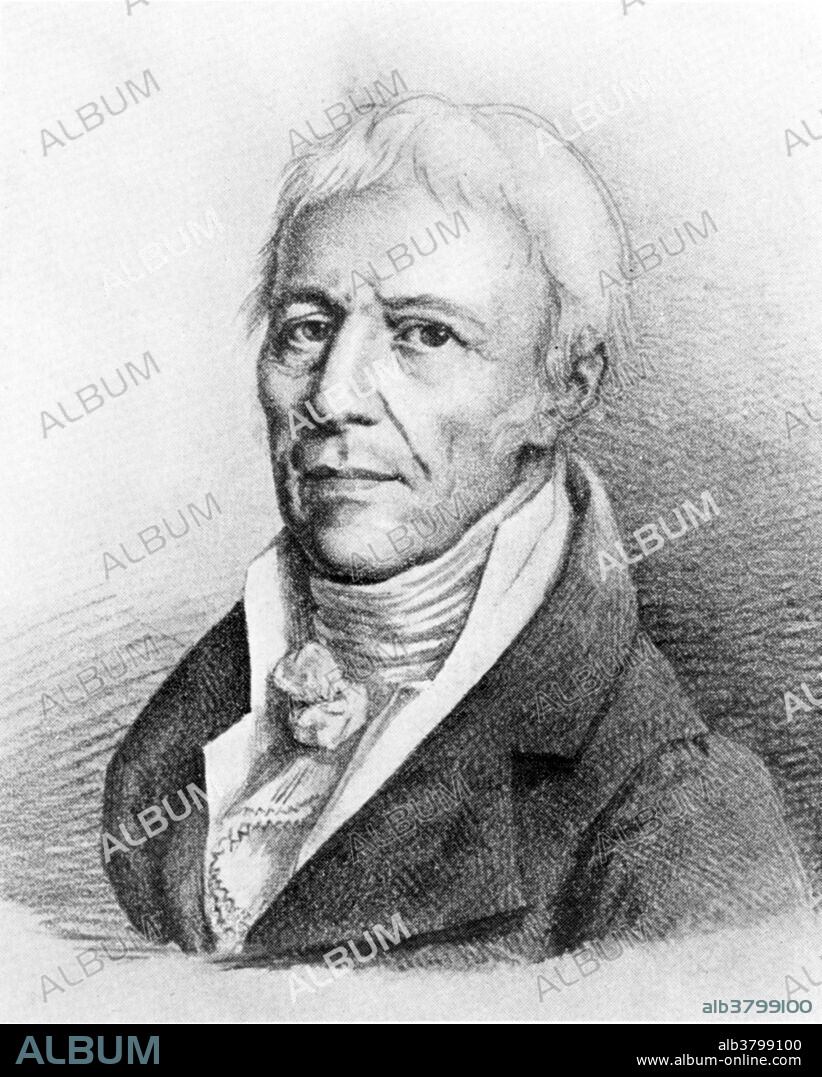alb3799100
Jean-Baptiste Lamarck, French Naturalist

|
Add to another lightbox |
|
Add to another lightbox |



Title:
Jean-Baptiste Lamarck, French Naturalist
Caption:
Jean-Baptiste Pierre Antoine de Monet, Chevalier de la Marck (August 1, 1744-December 18, 1829), often known simply as Lamarck, was a French naturalist. He was a soldier, biologist, academic, and an early proponent of the idea that evolution occurred and proceeded in accordance with natural laws. His theory of evolution was based on the idea that acquired characteristics are inherited. After 1800 he put forward general ideas on plant and animal species, which he believed were not "fixed". He proposed that in nature it is the environment that produces change; the length of the giraffe's neck, for example, he attributed to generations of reaching up for food. A facet of his views was that such a change could be inherited; and this attracted ridicule. His ideas were largely abandoned after the work of Darwin and Mendel. In the modern era, Lamarck is widely remembered for a theory of inheritance of acquired characteristics, called soft inheritance, Lamarckism or use/disuse theory. Lamarck gradually turned blind and died in Paris in 1829. When he died, his family was so poor they had to apply to the Academie for financial assistance. Lamarck's books and the contents of his home were sold at auction, and his body was buried in a temporary lime-pit.
Credit:
Album / Science Source / New York Public Library
Releases:
Model: No - Property: No
Rights questions?
Rights questions?
Image size:
2550 x 3178 px | 23.2 MB
Print size:
21.6 x 26.9 cm | 8.5 x 10.6 in (300 dpi)
Keywords:
1744 • 1829 • 18TH CENTURY • 18TH CENTURY, THE • 18TH • 19TH CENTURY • ACADEMIC • ART • ARTWORK • BIOLOGIST • BW • CELEBRITY • CHEVALIER DE LA MARCK • DE LA MARCK • DRAWING • EUROPEA • EUROPEAN • EVOLUTION • FAMOUS • FIGURE • FRENCH • HISTORIC • HISTORICAL • HISTORY • ILLUSTRATION • IMPORTANT • JEAN BAPTISTE LAMARCK • JEAN LAMARCK • JEAN-BAPTISTE LAMARCK • JEAN-BAPTISTE PIERRE ANTOINE DE MONET • LAMARCK • LAMARCKISM • MALE • MAN • MEN • NATURALIST • NOTABLE • PEOPLE • PERSON • PERSONALITIES • PERSONALITY • PORTRAIT • POTRAIT • SCIENCE: EVOLUTION • SOFT INHERITANCE • SOLDIER • USE / DISUSE THEORY • VARIATION OF SPECIES • WELL-KNOWN
 Pinterest
Pinterest Twitter
Twitter Facebook
Facebook Copy link
Copy link Email
Email

